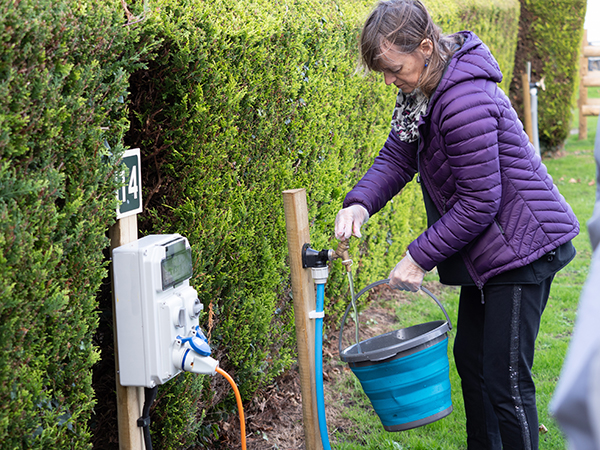Over four billion pieces of plastic are polluting a remote Pacific island
By divinaramirez // 2021-04-28
Tweet
Share
Copy

More than four billion pieces of plastic from across the globe have hitched a ride on ocean currents, landing on the beaches of Henderson Island. The island, a remote and uninhabited coral atoll in the eastern South Pacific, was thought to be one of the last remaining pristine places on Earth.
The discovery was made by researchers from the Natural History Museum in London. In a press release, study lead author Alex Bond said most of the rubbish they saw was "not new." In fact, Bond and his colleagues found some recognizable toys from the eighties and nineties. This was not at all surprising because plastic can persist in the ocean for a long time before eventually ending up on a beach.
Interestingly, however, none of the plastic debris they found on Henderson Island came from Pitcairn, the only inhabited island in the Pitcairn Island Group, to which Henderson Island belongs. Bond said the plastic debris came from Europe, Africa, Asia and North and South America. The plastic debris likely got into the ocean then eventually washed up on Henderson Island.
The researchers published their discovery in Marine Pollution Bulletin.
Billions of small pieces of plastic found along beaches
Bond and his colleagues first visited Henderson Island in 2015 and found just two grams (g) of tiny pieces of plastic, called microplastics, per square meter. But when they returned in 2019, they found up to 23 g of microplastics per square meter. In particular, they found that up to two inches of sand on the island's beaches were covered in plastic debris. It appeared that most of them were decades old. The debris likely traveled via powerful currents. This is very likely because the South Pacific Gyre, a system of rotating ocean currents, was found to be a hotspot of marine debris. Scientists have found enormous garbage patches, some as big as countries, in ocean gyres. The researchers were also able to determine the sources of plastic pollution on the island, such as fishing, agriculture and other human activities on beaches. But perhaps the most impactful source of plastic pollution is wastewater disposal systems, which do a poor job of filtering out microplastics before releasing wastewater into waterways that connect to oceans. (Related: Microplastics have reached farmland; experts say recycled wastewater and garbage are to blame.) Given their disturbing findings, Bond said plastic pollution needs to be dealt with in a cooperative manner and on a global level. He said he believes plastic will eventually be treated like other unquestionably damaging contaminants, such as lead and mercury. Once plastic reaches that same status, experts may go about studying how best to mitigate plastic pollution on a global scale.Litter on Henderson Island linked to industrial fishing
Henderson Island is one of the last near-pristine islands on Earth. It has limestone cliffs, white, sandy beaches, undisturbed vegetation and unique biodiversity. Due to these characteristics, the island was awarded a World Heritage Status by the United Nations Educational, Scientific and Cultural Organization (UNESCO) in 1988. Unfortunately, that status may be up for a review real soon. In 2017, a group of scientists, conservationists and journalists who spent two weeks cleaning up the island's beaches collected over six tons of plastic rubbish. They first removed fishing buoy from the beaches. They found a total of 1,200. They then removed huge pieces of plastic, such as food containers, water bottles, laundry hampers and even toilet seats. They counted, catalogued and weighed each item so scientists can compare the data with data collected in 2015. Overall, the team estimated that 60 percent of the rubbish they removed was associated with industrial fishing, which remains illegal on Henderson Island. Unfortunately, with plastic debris traveling the world via powerful ocean currents, remote islands may only get more and more polluted in the near future. Learn more about the impacts of plastic pollution on ocean health and marine life at OceanHealthNews.com. Sources include: DailyMail.co.uk NHM.ac.uk TheGuardian.comTweet
Share
Copy
Tagged Under:
plastic pollution plastics water pollution clean water microplastics discoveries ocean pollution ocean health ocean life badpollution marine plastic pollution
You Might Also Like
Survival essentials: Tips for storing water in your car
By Divina Ramirez // Share
By Arsenio Toledo // Share
Groundwater wells worldwide at risk of going dry, study finds
By Virgilio Marin // Share
7 Brilliant uses for a collapsible bucket, a BOB essential
By Divina Ramirez // Share
Warp speed may be possible, but it will require huge amounts of energy
By Franz Walker // Share
By News Editors // Share
Recent News
A new golden era: Bullion's meteoric rise defies conventional wisdom
By willowt // Share
Omega-3 fatty acids: A natural shield against depression and anxiety
By patricklewis // Share
Untreated sleep apnea accelerates cardiovascular aging and increases mortality risk, new study warns
By patricklewis // Share











